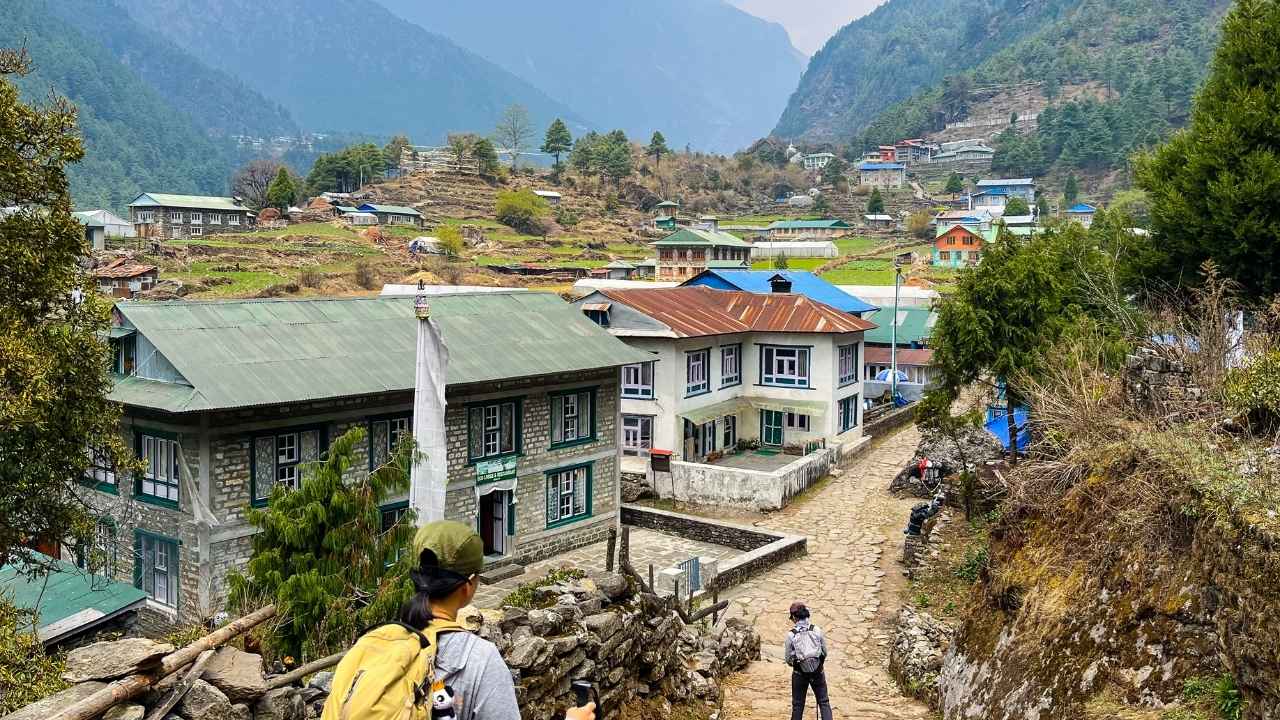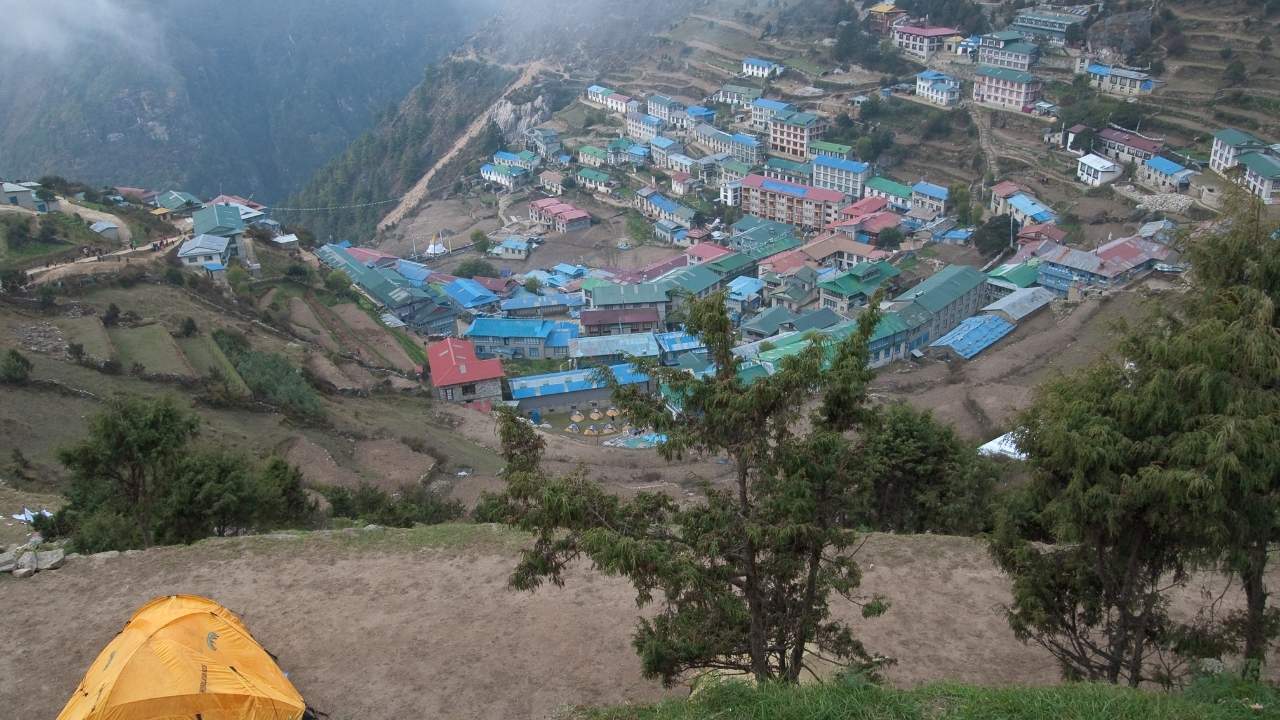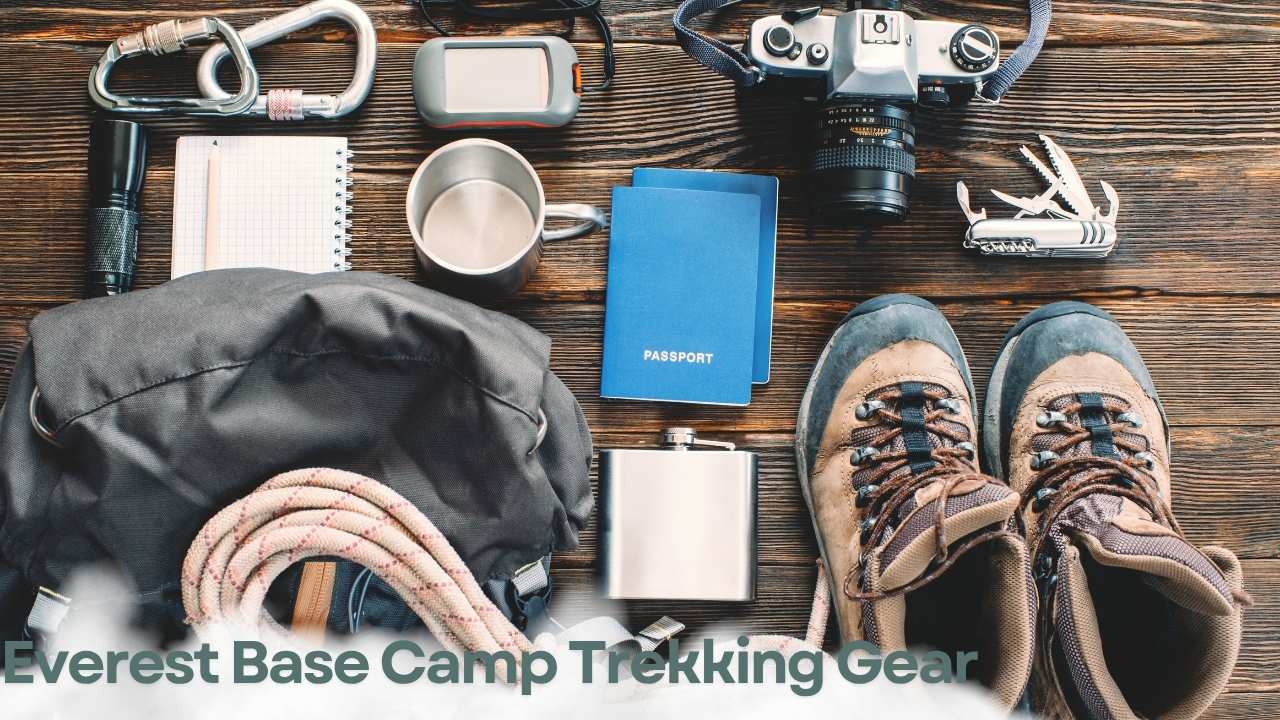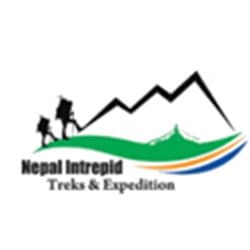Most people believe the Everest Base Camp Trek is only for rich travelers. People see travel companies charging $1500 to $3000 and think this dream is impossible for someone on a small budget. The actual truth is very different. If you plan carefully, travel like a local and control daily expenses, then you can complete the Everest Base Camp (EBC) trek cheaply and smartly. In this blog, you will learn the cheapest way to do the Everest Base Camp Trek without losing safety, comfort and adventure.
Introduction
Trekking to Everest Base Camp is one of the most famous adventures in the world. Each year, thousands of trekkers walk through the Khumbu region to see the world's highest peak, Mount Everest (8,848.86 m). Most people stop dreaming because they think the EBC trek is costly. But this is not true; trek can be costly if you book luxury packages. There are also cheapest way to do the Everest Base Camp Trek. If you plan to trek by yourself or go for standard packages, then it can be completed at a small cost.
If you book the average commercial package, it will cost between $1500 to $2500. If you follow a budget-friendly trekking style, you can complete the Everest Base Camp Trek for around $1200 as well. This cost includes flight, permits, food and accommodations. If you choose the package wisely, then you can also get porter and guide service.

You should understand how to save money step by step to make your trek budget-friendly. You should choose the right season, smart transportation, budget lodges and simple meals. You should avoid unnecessary costs such as expensive gear, daily luxuries or paid helicopter services.
In this blog, you will learn about the cheapest way to do the Everest Base Camp Trek. We will provide tips on how much money you really need, where you can save, how to plan routes cheaply, tips local use to reduce cost and what to avoid to stay safe and spend less money. At the end of the blog, you will get a clear idea of how to trek to Everest Base Camp most cheaply and smartly.
Budget Planning: Real Cost Details
If you want to trek to Everest Base Camp on a budget, then smart planning is necessary. You should know exactly how much money is needed and where you can save. Let's break down the real cost for a budget EBC trek.
-
Flights to Lukla: Many trekkers fly from Kathmandu to Lukla. For round-trip flights, it costs around $160 to $200 in the low season. If you want to save your money, then you can take a bus or Jeep to Jiri or Salleri. You can start your trek from there. It will take a few more days, but you can save the expensive flight cost.
-
Trekking Permits: If you want to trek in the Everest region, it is mandatory to have a Sagarmatha National Park permit ($30) and a Khumbu Pasang Lhamu Rural Municipality Permit ($20). These are small but very essential expenses.
-
Food and Accommodation: On the way to Everest, tea houses provide rooms and meals. If you choose a budget room, it costs $3- to $5 per night. Meals like Dal Bhat only cost $3 to $5. If you eat local food and stay in a shared room, your daily expenses will be under $10 to $15.
-
Guide or Porter: Hiring a guide costs around $30 to $35 per day on this route. If you hire a porter, it costs $20 to $25 per day. If you hire from Lukla and share with a group, it can reduce expenses. If you walk alone without a guide, make sure you are experienced and understand the safety rules and regulations.
-
Gear and other Items: You have to spend $50 to $100 to buy essential gear for the trek. You cannot complete this trek without essential gear like down jackets, sleeping bags, and trekking poles. So, you can save your money by renting gear in Kathmandu instead of buying. You can also buy second-hand gear.
-
Emergency Fund: You should always keep $50 to $100 for emergencies. This money can be useful for altitude sickness, extra days and unexpected costs.
As a total estimated budget with careful planning, the entire trek can cost you approximately $1200. If you understand the expense, you can avoid overspending. You can also plan a smart budget trek. The main key is to spend money on what matters most and save on unnecessary luxuries.
Cheapest Way to Do the Everest Base Camp Trek: Route Plan
If you are planning for the cheapest way to do the Everest Base Camp Trek, then you should choose the right route. Most of the travelers take a flight from Kathmandu to Lukla and start their trek. This is the fastest route to Everest Base Camp. The flight to Lukla costs around $160 to $200, which is a large part of the budget.
If you want to save your expenses, then you can start your trek from Jiri or Salleri. This route is a little longer and takes a few extra days. Choosing this route, you can save the flight costs because you do not need the expensive Lukla Flight. You will be trekking through beautiful villages, forests, and suspension bridges. This way, you can also experience a more authentic trekking experience.
The standard budget trek usually takes 12 to 14 days from Lukla to Everest Base Camp and back. If you start your trek from Jiri or Salleri, it may take 18 to 21 days. It depends upon your pace. If you stay in lower villages longer, walk slowly and acclimatize properly, it helps to avoid extra rest days at expensive teahouses at higher altitudes, where prices rise significantly.
If you follow this route and are flexible with your days, you can experience Everest Base Camp without spending a fortune. If you do smart route planning, it can be one of the biggest ways to cut costs while still enjoying the adventure.
Saving Money on Transportation: Lukla Flights & Alternative
Transportation is one of the biggest costs on the Everest Base Camp Trek. Most of the trekkers take a flight from Kathmandu to Lukla. There are some ways to save money.
-
Cheap Lukla Flights: Flights from Kathmandu to Lukla cost around $160 to $200. To get cheap tickets, you should book early,2 to 3 weeks before trekking. You should compare local travel agencies in Kathmandu. Sometimes these agencies offer lower rates than online prices. You should be flexible with your dates.
-
Alternative Route: Jeep or Bus to Jiri or Salleri: If you want to save more money, you can skip the Lukla flight. You can take a bus or a Jeep to Jiri or Salleri and start trekking from there. It will cost around $20-$30, which is cheaper than a flight. These routes add 4 to 5 days of trekking, but they will also help you save money. In this alternative route, you can also explore hidden villages and forests that most Lukla trekkers miss.
-
Local Tips: Sometimes flights get canceled due to bad weather. So you should plan for flexibility to save yourself from unnecessary expenses. You should always check flight prices and local options in Kathmandu before booking. Also, avoid private taxis for long-distance travel. Instead, you can use local buses or jeeps, which are much cheaper and safer.
By using these methods, you can reduce your transportation costs. If you choose the Right route and transportation method, it will be one of the cheapest way to do the Everest Base Camp Trek.
Smart Accommodation and Food Saving on the Trails
Food and Accommodation are daily expenses; they can quickly add up on the Everest Base Camp Trek. If you choose smartly, you can keep the cost low without compromising your comfort.

-
Stay at Budget Tea Houses: There are small tea houses in most of the villages. You have to pay $3 to $5 per night in a budget room. You can often find a simple room with a shared bathroom. Higher altitude villages like Gorak Shep or Lobuche are very expensive. So, if you stay a budget teahouses at lower altitudes, you can save up for the lodges at the higher remote regions.
-
Eat Local: Nepali meals like daal Bhat are cheap and filling. You have to pay $3 to $5 per meal. You can avoid expensive items like imported coffee, snacks, or meat dishes. By avoiding these items, you can save up significantly during each day of the trek. Drinking water can also be cheaper if you bring a water purifier.
-
Share Meals and Rooms: If you trek with friends or join a group, sharing meals and rooms helps in saving money. Many tea houses allow group bookings, which can lower your expenses per person.
By planning accommodations and meals smartly, you can keep your daily expenses to a minimum, which is key to a budget Everest Base Camp Trek. Smart food and accommodation choices allow you to enjoy the trek without spending unnecessary money.
Hire Guide or Trek without Guide: Best Budget Choice
Your trek to Everest Base Camp can be safer and easier if you hire a guide. Hiring guides are a little more expensive.e If you are on a tight budget, there are some options for you :
-
Trekking Solo: Nepal allows solo trekking in the Everest Region. If you are experienced and fit, you can trek solo, but you will need to know the route and daily distances. You should monitor altitude sickness symptoms and be always be ready for emergencies. Solo trekking is the cheapest option because you don't pay for a guide or porter, but safety should always come first.
-
Hiring a Guide or Porter: If you want to hire a guide for help, a guide costs around $30 to $35 per day. If you hire a porter, you have to pay $20 to $25 per day. With a porter, you only need to carry a lighter backpack, which makes hiking easier, especially at higher altitudes. You can hire from Lukla instead of Kathmandu to save money.
-
Sharing Cost: If you trek in small groups, you can share a guide or porter. Sharing guides reduces the daily cost for each person. Most of the trekkers use this method to balance safety and budget.
-
Safety Tips on Budget: You should always check your guide's experience and references. You should not over-rely on a porter and carry your essential items yourself. Always keep emergency contacts and your insurance ready.
If you decide carefully between solo trekking and hiring help, you can reduce expenses while staying safe. This is one of the smartest ways to balance budget and safety on the Everest Base Camp Trek.
Savings Expenses on Trekking Gear
Buying trekking gear can be expensive, but smart choices help you save a lot. You don't need to buy the most expensive brands to trek to Everest Base Camp safely.

-
Rent Gear in Kathmandu: Many trekking shops in Thamel, Kathmandu, offer you rental options. You can rent items like down jackets, sleeping bags, Trekking poles, and boots. Renting can cost $5 to $10 per item per day. Renting is much cheaper than buying new gear.
-
Buy Second-Hand Gear: In Thamel, shops sell used gear in good condition. Jackets, sleeping bags, and trekking boots can be a lot cheaper than new ones. Buying second-hand gear is safe if you check for quality before purchase.
-
Most needed vs Optional Gear: You should focus on essential gear like warm down jackets, sleeping bags, hiking boots and Trekking poles. Optional items like expensive gloves, branded backpacks, or high-tech gadgets can be skipped and borrowed.
-
Pack Light to Save Money: Carrying less weight reduces the need for a porter. It also helps in saving money. A small backpack also encourages you to buy only essential items. This can go for both cost and convenience.
Smart Tips: Bring your own small items like water bottles, hats and thermal clothes from home to save extra. You should also avoid buying new gear in high-altitude villages. The cost can be 2 to 3 times higher. You can save hundreds of dollars by renting, buying second-hand hand and packing smart. This helps to make the Everest Base Camp trek more affordable.
Budget Safety & Hidden Costs to avoid
Even on a budget, you should never compromise on safety. There are some hidden costs and risks that trekkers often overlook, but knowing them can save both money and trouble.
-
Insurance is Essential: It is mandatory to have travel and trekking insurance. It seems like extra expenses, but it can save hundreds or thousands of dollars if there is an emergency. Always make sure that your insurance covers high-altitude trekking and helicopter evacuation.
-
Use Helicopter Rescue Only When Necessary: Some local guides or shops may offer expensive helicopter services unnecessarily. You should only use a helicopter rescue if it is recommended by trained medical staff. Always check the cost in advance.
-
ATM and Payment Fees: Nepal has limited ATMS in the Everest Region. ATM withdrawals often have extra fees and the teahouses along the trail do not accept card payment. Always carry enough cash in Nepali rupees to avoid extra expenses.
-
Wi-Fi and Charging Cost: Wi-Fi and phone charging at high-altitude tea houses can be expensive. Sometimes you have to pay upto $5 per hour. You should carry a power bank and a solar charger to reduce the charging cost and use mobile data where you can get coverage.
By being aware of hidden costs and safety risks, you can protect both your budget and health. Planning is the best way to have a safe and cheap Everest Base Camp Trek.
Conclusion
Trekking to Everest Base Camp doesn't have to be costly. By planning carefully, making smart choices, and following local tips, you can complete this adventure on a budget without the need to break your bank. Depending on your plan, you can book a standard package for around $1500 to $2500. Or, you can go for a cheaper self-managing option for around $ 1,200.
Final Budget Tips:
-
Plan your route smartly, you can consider Jiri or Salleri to save flight costs
-
You should travel in the low or shoulder season for cheap flights and tea houses
-
Eat local foods and stay in a budget Tea house
-
Hire a guide and porter wisely
-
Carry cash and a power bank
-
Always keep an emergency fund and buy proper insurance
Always remember, the Everest Base Camp trek is not just about reaching the top. You should enjoy your journey, the villages, the mountains and the culture along the way. If you plan smartly, you can have this life-changing adventure without spending a fortune.
The budget doesn't matter; the Himalayas always welcome you. With determination, patience, and smart money-saving methods, your dream of standing at the foot of the world's highest mountain can become a reality. So pack your bags, tighten your boots and get ready for an unforgettable, budget-friendly Everest Base Camp adventure.
